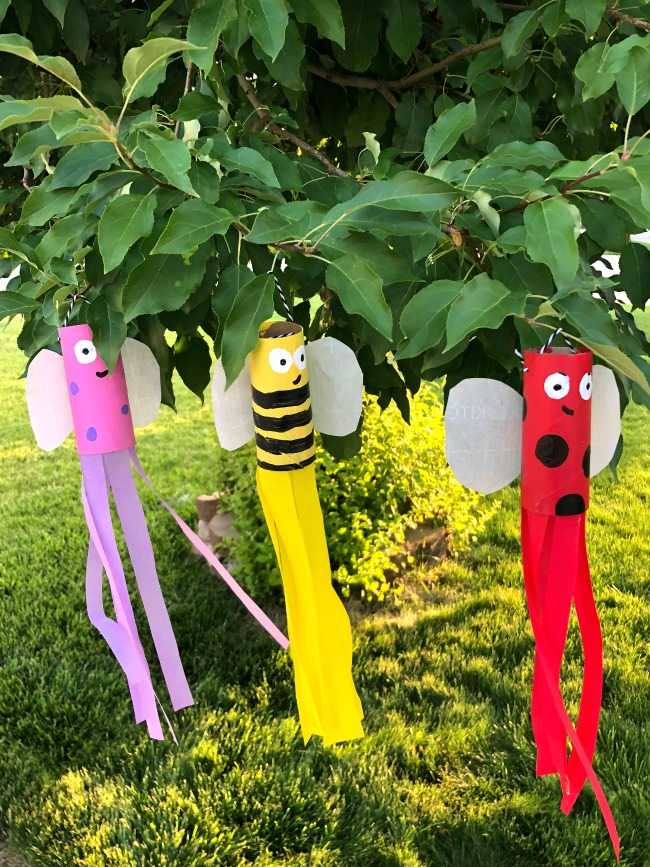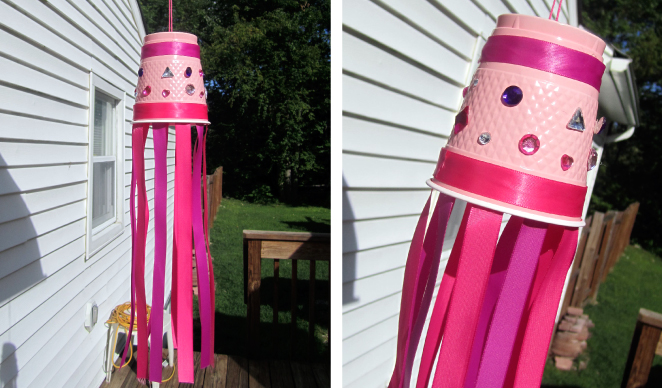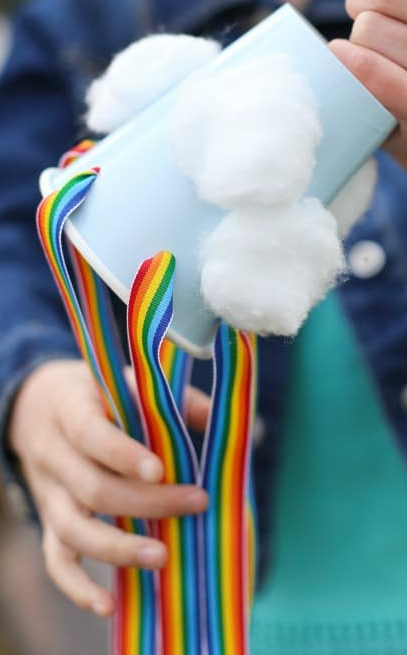Let’s do an activity that combines our creativity, artistic skills and science! Today we’re creating windsocks. In this activity, we will create a design that signals the direction of the wind. Let your creativity soar like the wind!
Supplies needed:
Main Unit – Choose any one
- Cardstock paper
- Paper bag with bottom cut off
- Plastic/paper cup
- Pringle can
- Cardboard tube
- Plastic bottle with bottom/top cut off
Streamers – Choose any
- Ribbon
- Crepe paper
- Colored paper/newspaper strips
- Tissue paper strips
- Plastic or paper bags
Tools
- Scissors
- Hole punch or pen to punch holes
- Tape/glue
- String/ribbon/fishing wire
Extras – Optional
- Crayons/watercolors/colored pencils/markers
- Glitter/gems/cotton balls for clouds
- Stickers/images from magazines/paper to draw on
Here’s what you do:
This is the perfect project to go on a scavenger hunt around your home. Check for craft supplies, party supplies, recycled goods like cardboard tubes and white plastic bags.
- Your first job is to find something that can be the main part of your windsock. You are looking for anything that can be turned into a tube shape. Some possibilities: a clean empty plastic bottle, a cardboard tube, a piece of cardstock, a paper bag, a disposable plastic cup. Anything that can be shaped into a three-dimensional cylinder will work. If your item has a top/bottom, cut it off so at least the bottom of the tube is open.
- Time to design! Find supplies you can use to create colors or images on your windsock. You can use crayons, markers, stickers, colored tissue paper, or even pictures that you draw, cut and paste. Use tape to put everything on.
- Now you need wind tails. Find something you can cut into long streamers. Think about crepe paper, ribbons, or even white plastic bags. Tape the streamers to the bottom of the windsock.
- Add string at the top. Punch holes in the top of the main section and thread ribbon/string/fishing wire/pipe cleaners through.
- Install your windsock outside! Watch what happens when the wind picks up and see if you can tell which way the wind is blowing. Does the windsock blow in different directions? How does the direction of the wind tell you what type of weather is happening? Be a scientist – think about what wind speed and direction could tell us about weather patterns.

Challenge Extensions and Resources:
How to Interpret an Airport Airsock
eMedia
Download these eMedia titles using the Hoopla app.
Wind by Brienna Rossiter (eBook)
Wind by Grace Hansen (eBook)
Wind by Ann Herriges (audiobook)
Wind Power by Clive Dobson (eBook)
Gases, Pressure, and wind by Paul Fleisher (eBook)
Discovering Cylinders by Nancy Furstinger (eBook)

Books
Wind by Erin Edison
When the Wind Blows by Stacy Clark
The Boy Who Harnessed the Wind by William Kamkwamba and Bryan Mealer
We Love Cylinders! by Beatrice Harris
“The Why” behind the Challenge:
Did you know?
Windsleeves are originally from Rome, then popular in China and Japan. In China and Japan, wind sleeves were often made in the image of a fish. They were originally made of silk and paper.
In addition to being used to signal the direction of the wind, they also were put up to celebrate the birth of a child.
They are still in use at airports and in areas of extreme weather to signal wind direction and speed. At airports, pilots rely on wind socks that are orange and white.


